Location: Blackness, Falkirk, Scotland
kind of castle: curtain wall, artillery fortification
today: restored, opened to public, at times filming location
public transport: busses to Blackness (short walk down to the castle)
scheduled monument: yes
managed by: Historic Environment for Scotland
entrance fee: £ 6.00 (for adults) Blackness Castle: Prices and Opening Times | Hist Env Scotland (historicenvironment.scot)
opening times: 1 April to 23 December and 29-30 December: daily except Friday 10 am to 4 pm; 5 January to 31 March: Daily, 10 am to 4 pm
directions: Blackness Castle – Google Maps
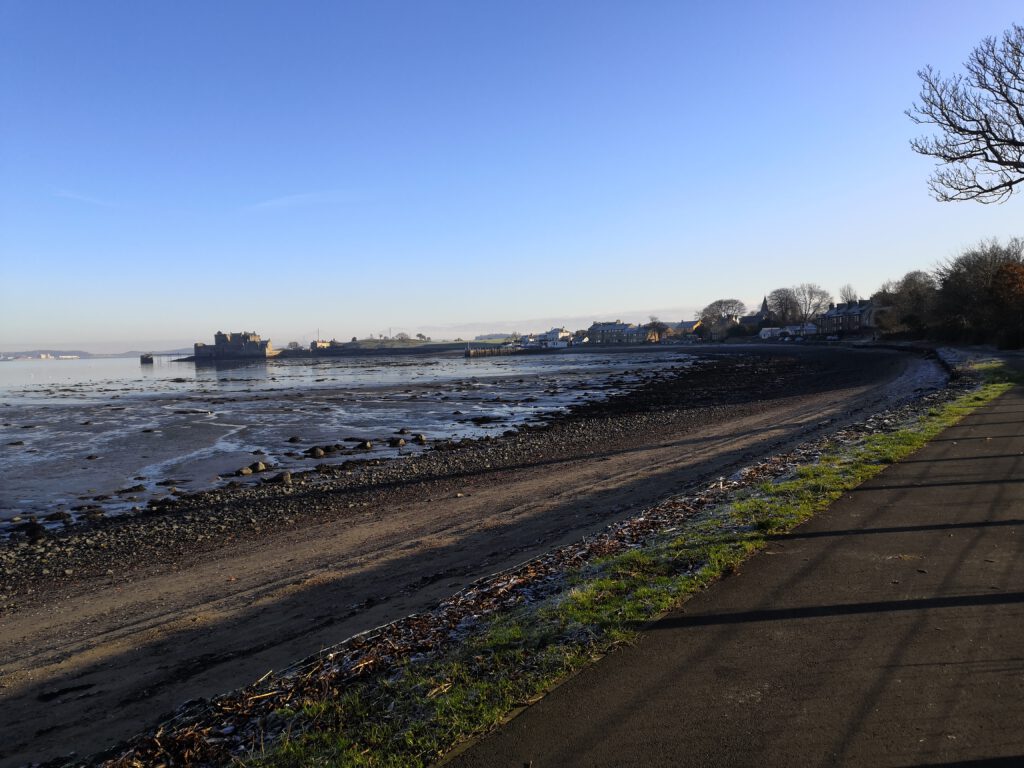
Throughout the years the stone castle had many different functions. Located at the Firth of Forth the “Ship that never sailed” often served as a port / the location served as a port for the royal burgh of Linlithgow. It for sure is a slightly different castle for sure. If you look at it from the seaward side, it looks like a great stone ship and if you take a look at it from above you can see the resemblance even more. The castle’s tree towers support the vision as well, coming across like masts of a ship.

The Castle you can see today was build in the 15th century as a residence for the Crichton’s, one of the most powerful families in Scotland, having served as a royal castle in 1453 it also served as a garrison fortress, a state prison, as well as an ammunition depot in the late 19th century, during the 20th and 21st century the castle was often used as a filming location for various movies and series such as Outlander, Hamlet, Ivanhoe and in 2018 it was used as filming location for ‘Mary Queen of Scots’ portraying Holyrood House Palace. Not just one famous monarch of Scotland has a movie portraying a part of their life, for which Blackness castle was used, in ‘Outlaw King’, portraying parts of Robert the Bruce’s life, the castle had a small role as well.
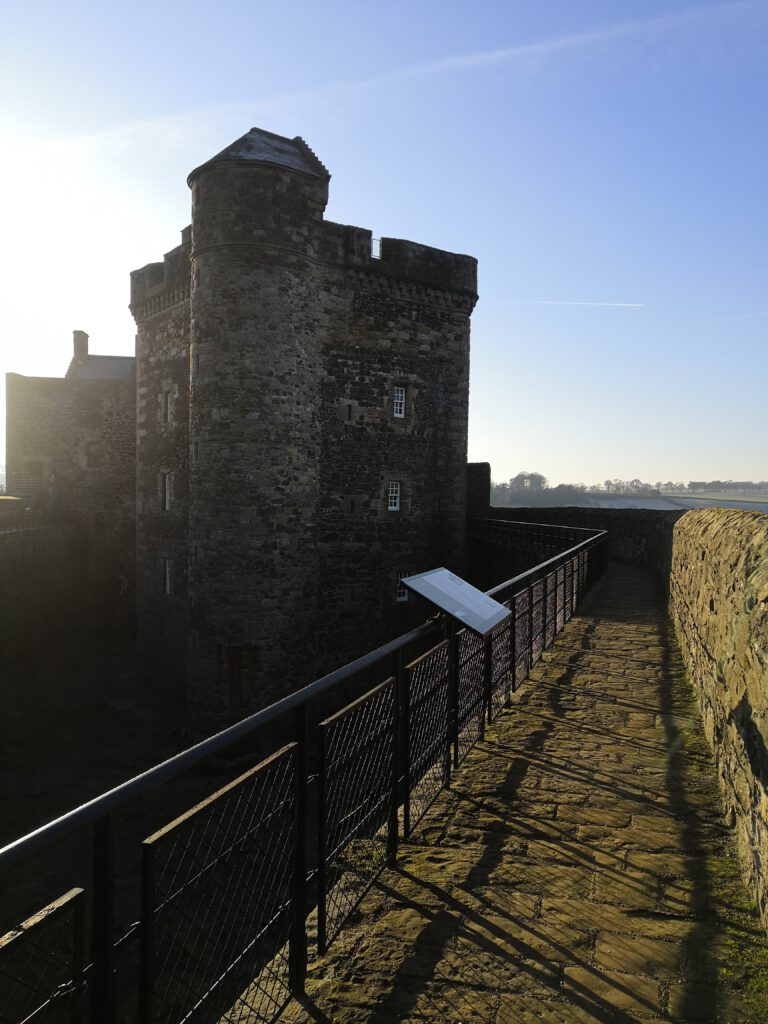
After the First World War the castle passed into state care to become a visitor attraction after its decommission.
It was James V who began, driven by the threat from Henry VIII, to convert the castle into an artillery fortification and a state prison in 1537. Just five years later, perfectly timed before the Wars of the Rough Wooing the work was completed. Enemies who would try to strike at the castle from the land met with the stern tower and its brute mass of masonry as well as cannons firing through great gun holes, positioned to give all-round firepower.
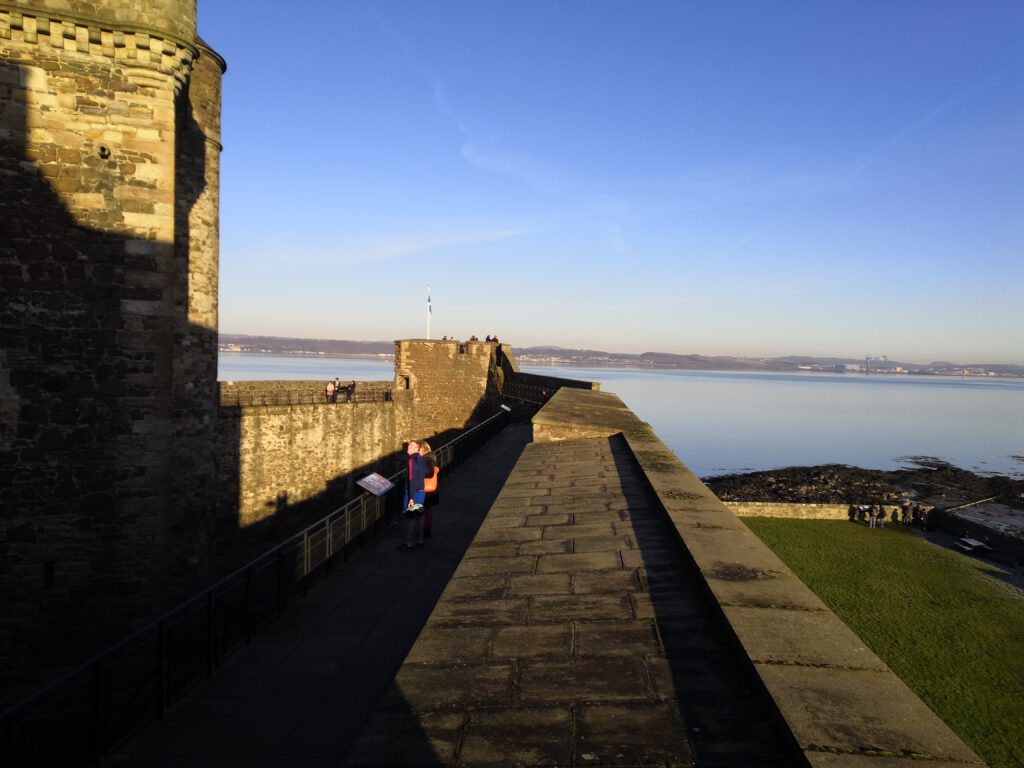
After the forced abdication of Mary Queen of Scots, the castle was mainly held by supporters of the former queen, fighting against the armies of Regent Moray. Due to Blackness Castles position and use as a port, it was perfect for securing quite a bit of help for Mary. But even this resistance was stopped eventually, and Mary’s supporters had to surrender.
The extremely strengthened castle was able to withstand various sieges until 1650 when Oliver Cromwell’s heavy guns struck the defences and forced the garrison to surrender. After the loss the Castle was abandoned until 1667 when it got repaired to serve as a prison. Scars of Cromwell’s attack you can see till today in the walls of the castle.

Though being an artillery fortification for years the main use of the castle was, not what it was originally built for, the residence of a nobleman, but a garrison stronghold and a state prison.
Over the years it held high status prisoners such as Cardinal David Beaton, the Archbishop of St Andrews, who in 1543 was the main rival of the Earl of Arran, the Scottish Regents during Mary Queen of Scots years as an infant.
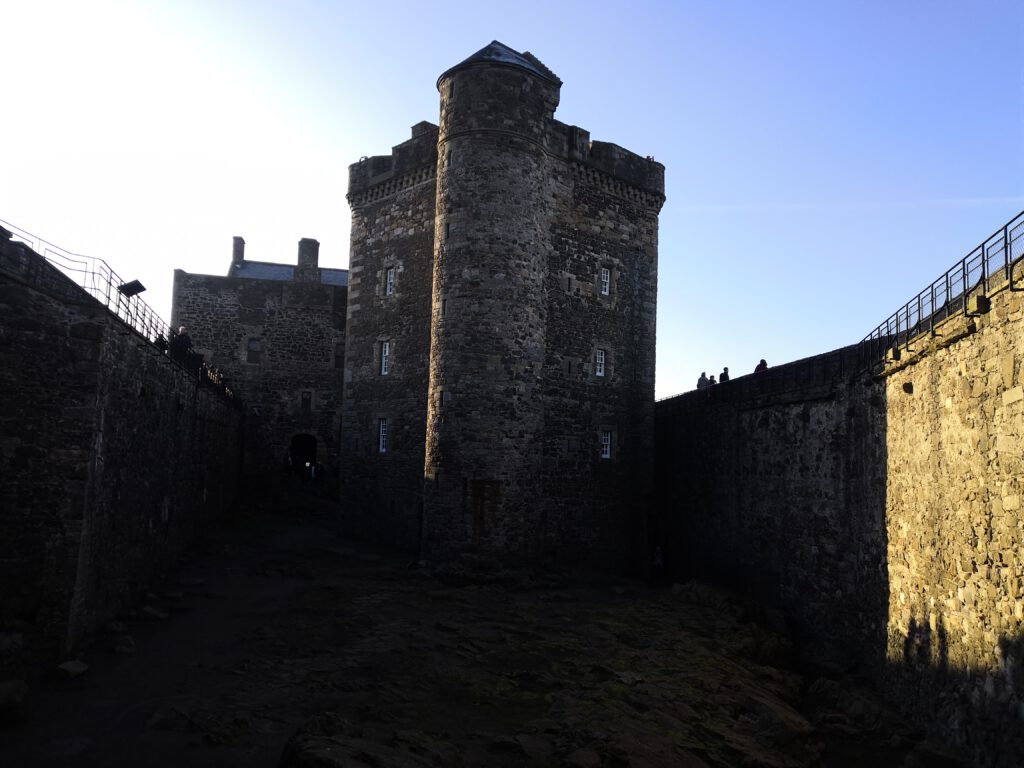
Mary’s descendants kept on using the castle as a prison during the ‘Killing Time’ of the 1670s and 1680s, imprisoning many Covenanters there. As well as imprisoning many foreign sailors and soldiers there, who were captured during the wars with France, Spain, and the USA, in the late 1700s.
In 1506 James IV came aboard the French ambassadors ship which lay at Blackness, this is said to be the confirmation of the ‘Auld Alliance’ between France and Scotland.

A Scottish castle wouldn’t be a Scottish castle without some legend or mystery surrounding it and so even this fortress at the Firth of Forth has a popular legend hidden inside the castle walls. Legend has it that there is a ley tunnel linking Blackness Castle with the ‘House of the Binns’ which is about two miles to the south. If this legend is true, it was for sure a great safety measurement of the castle or maybe a way for prisoners to easily escape?
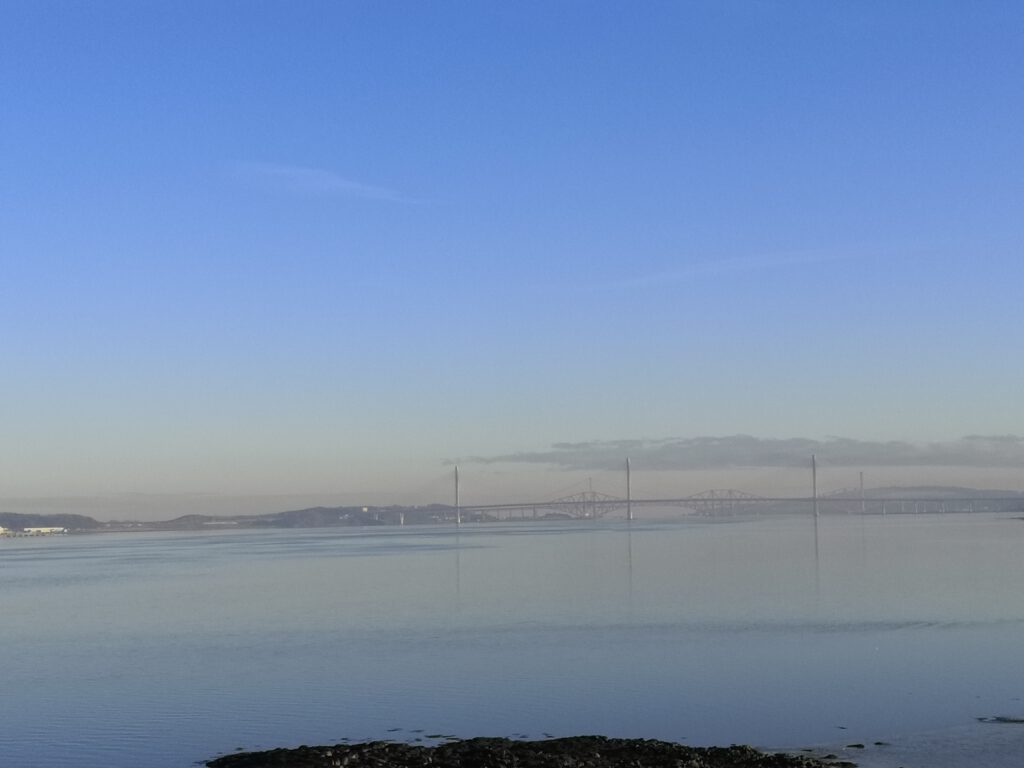
These days the castle is worth a visit, giving some time to explore the ‘Ship that never sailed’ in all its might. For fans of the series Outlander, it is a must see, discovering the place where Jamie was flogged by Black Jack Randal. But even who doesn’t know any of the movies or series I mentioned before this castle shows a lot of history and when walking on the wall or up the pier the views you can enjoy in all directions are truly magical. I personally did it on a sunny December day and though very cold it was just stunning, with views over the Firth of Forth as far as to the three Forth Bridges.
It is also to be said that if you walk the John Muir Way you’ll be able to pay the castle a visit as well. I for my part walked from Bo’ness to Blackness, visited the Castle and then took the bus to Edinburgh citycentre, which doesn’t run that often but is a great connection if you don’t fancy taking the car. Of course you could also walk the whole John Muir Way but the Ceilidh in the evening was more important to me, and the John Muir Way in general is still on my list anyway 🙂
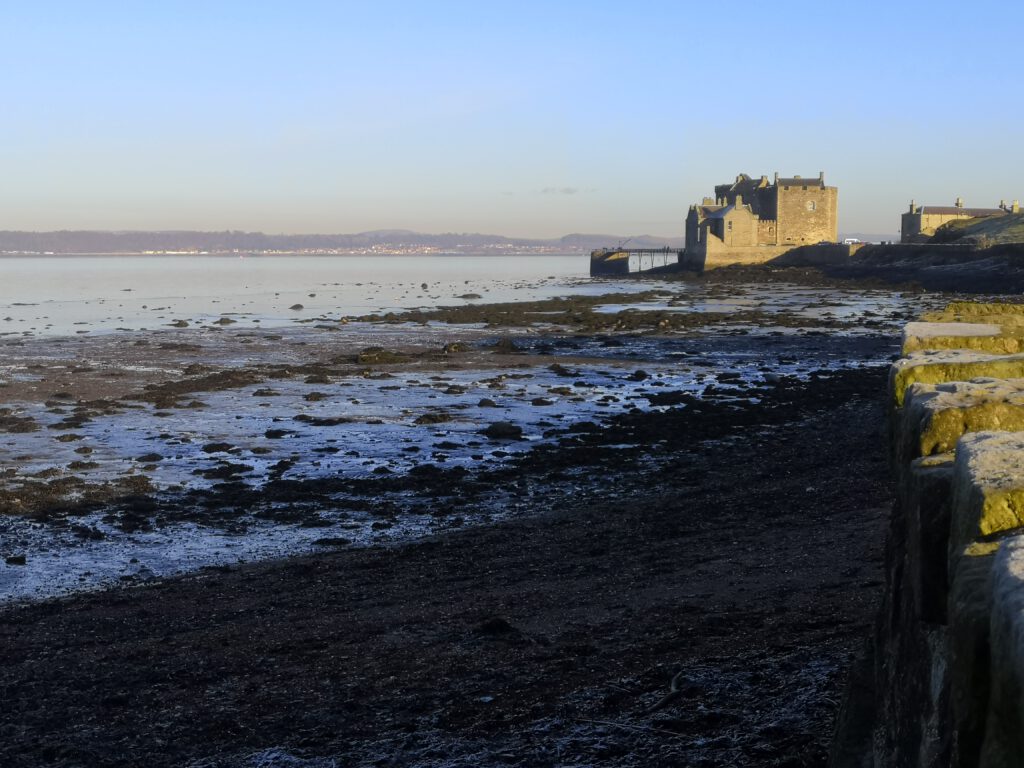
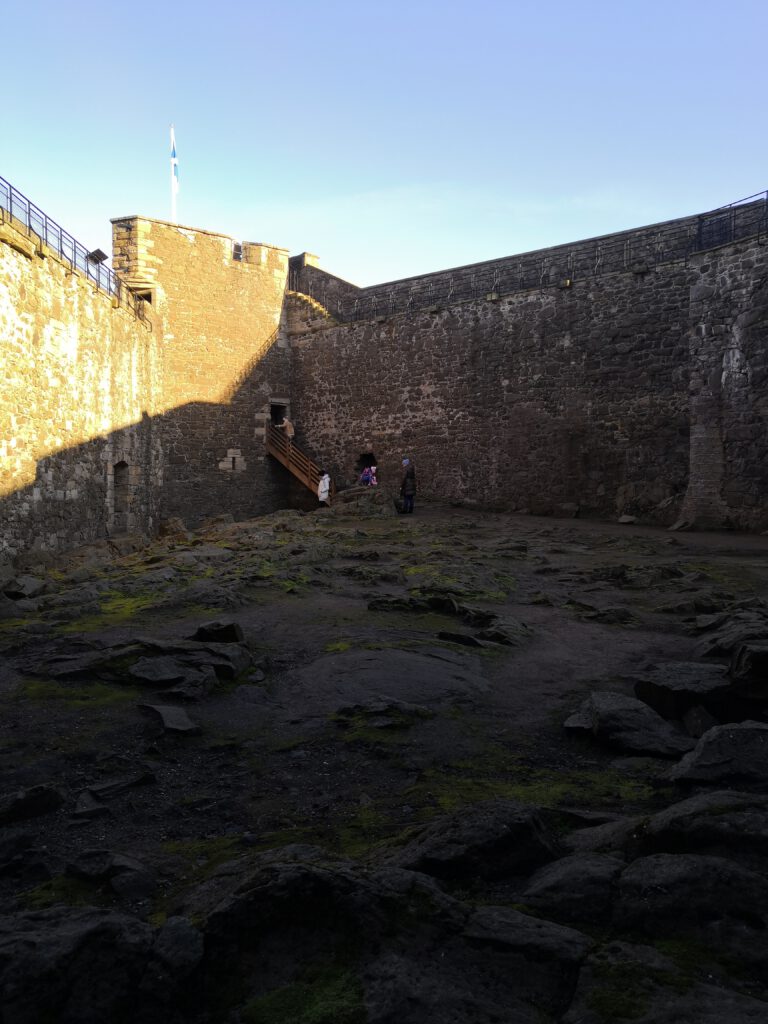
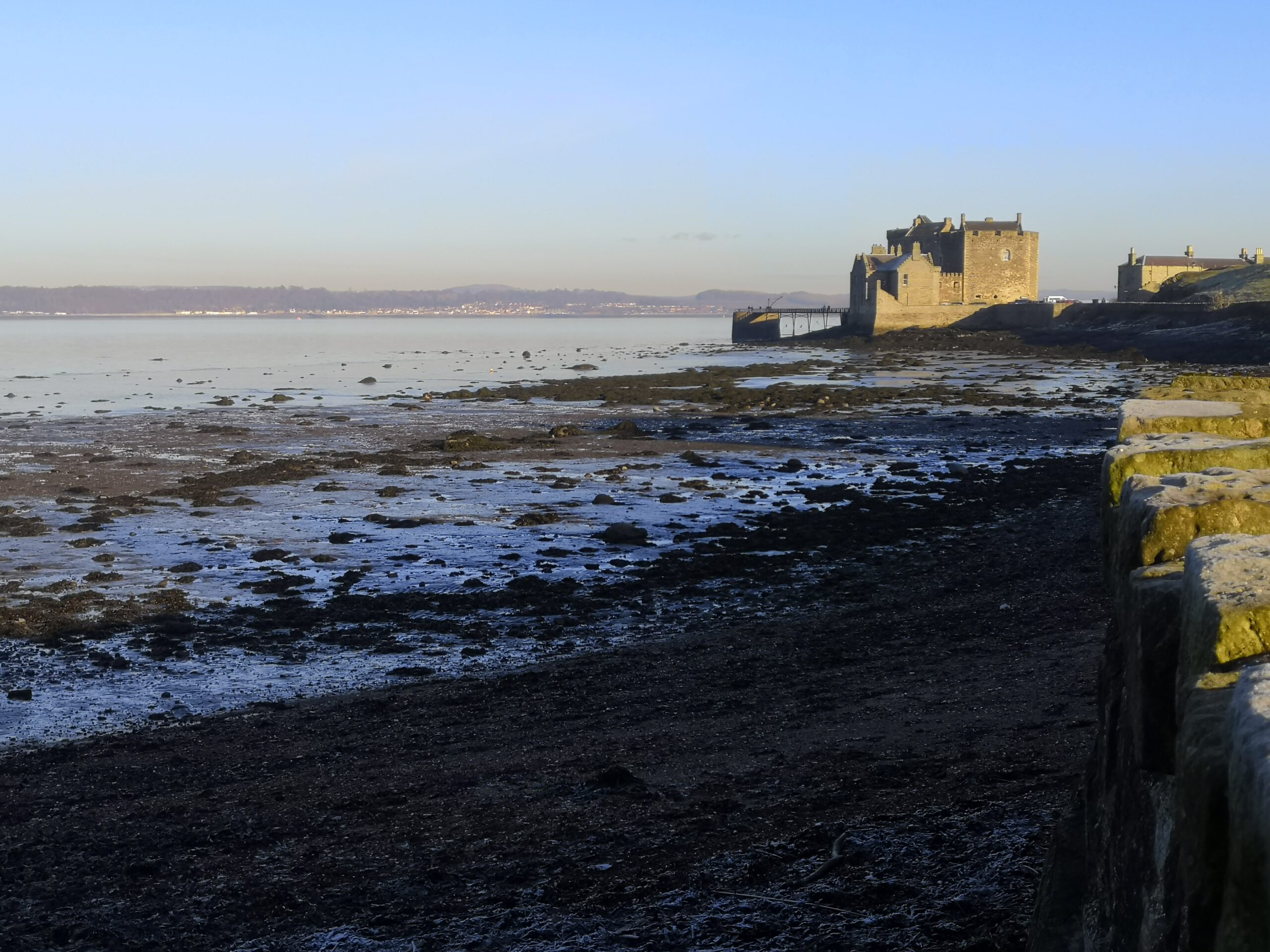
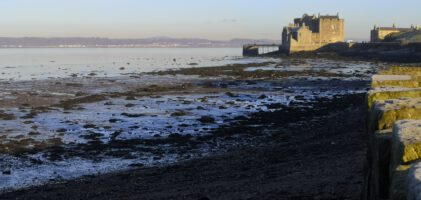
Pingback: Carsluith Castle – A scottish World
Pingback: Hopetoun House – The ancestral home of the Hope Family – A scottish World